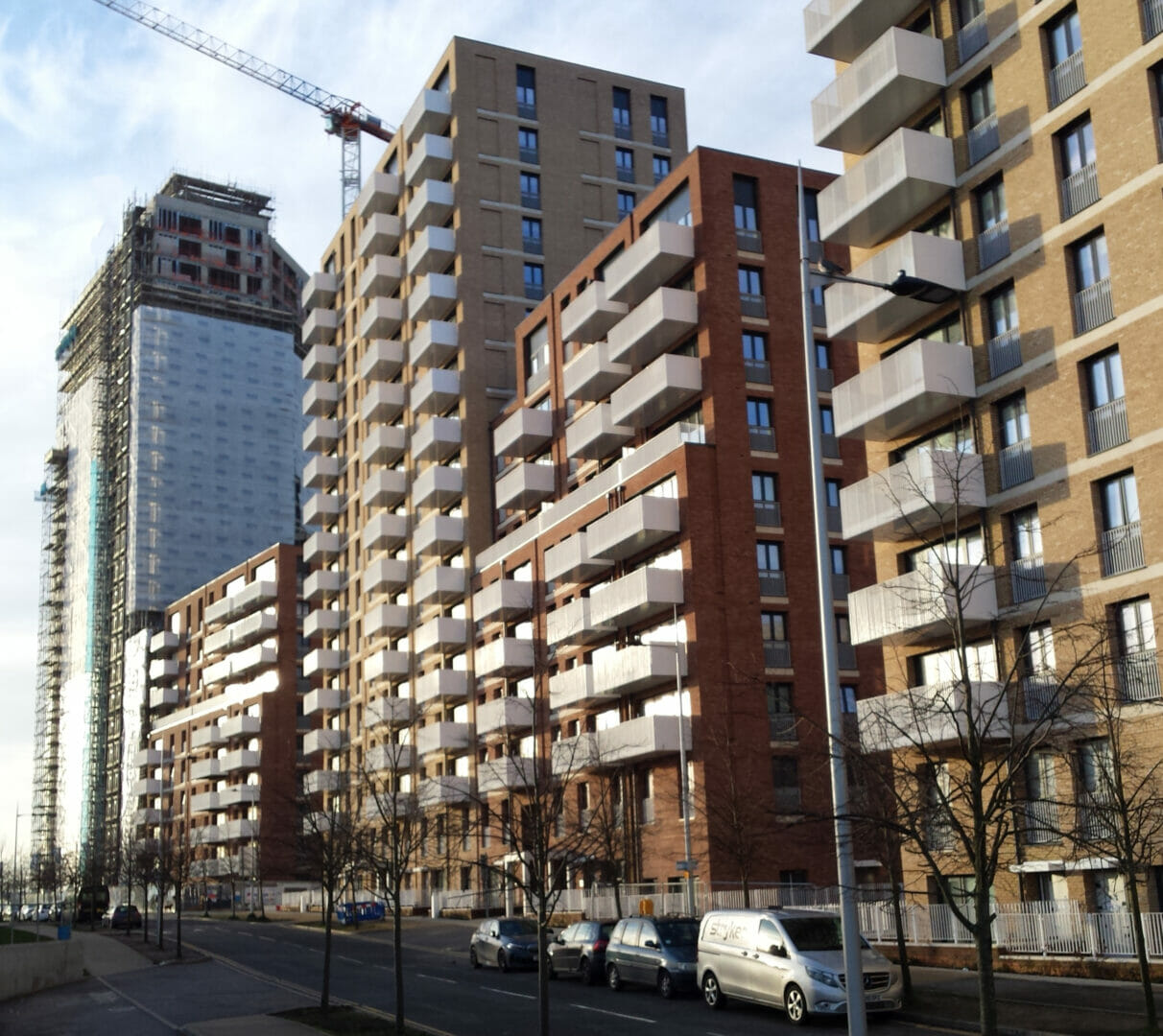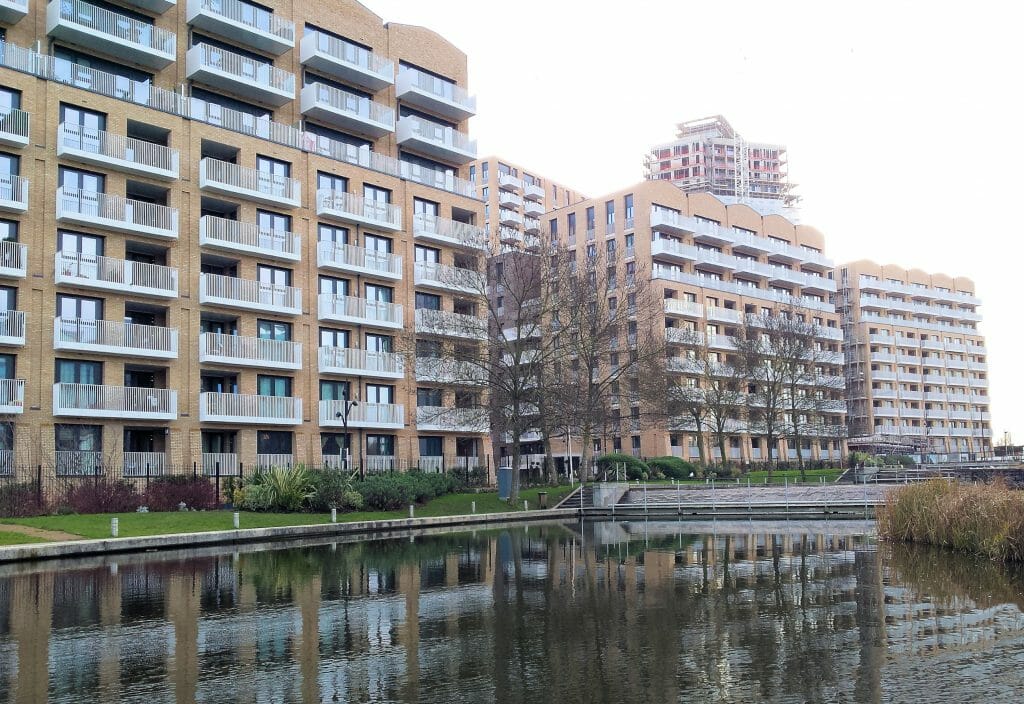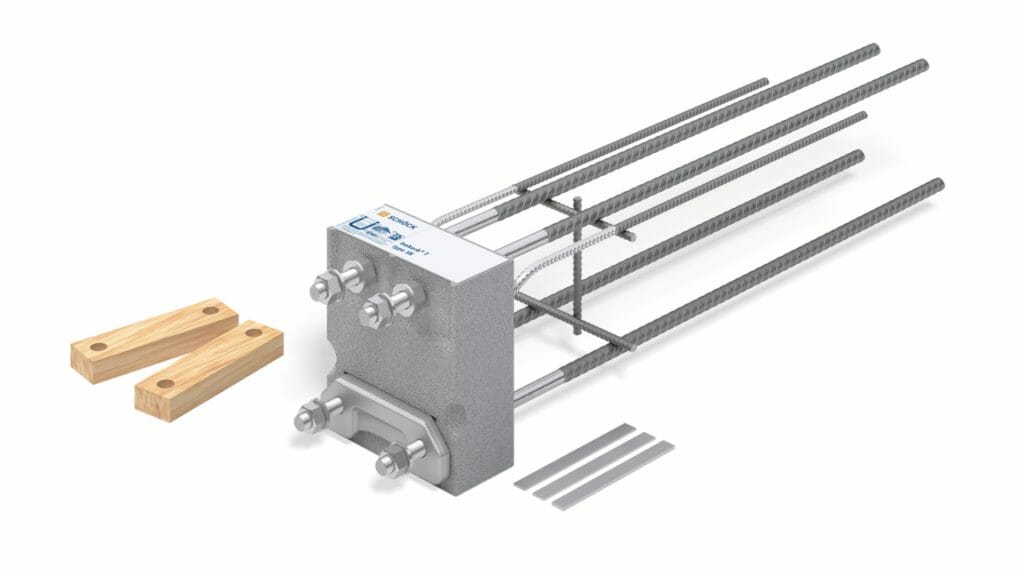
The Old Oak and Park Royal areas of West London are undergoing a massive transformation. A £26 billion masterplan to create a new district is taking shape in this part of London and it will see around 25,000 new homes built over the next 20 years. An already advanced scheme is the First Central development, part of which is the imposing Regency Heights. Built on the former site of the Sir Giles Gilbert Scott designed Guinness Brewery, it is a residential-led, mixed use scheme providing 807 residential units in three courtyard blocks wth a public plaza. The buildings range from five to twenty-seven storeys and the design is reminiscent of the Brewery’s early modern industrial brick architecture. The southern block is anchored by a brick-clad residential tower, which when complete, will create a new 90m high local landmark. The majority of apartments are fitted with steel balconies. So it is vital that with the design detailing any risk of thermal bridging is minimised and a key consideration throughout is the use of effective structural thermal breaks.
Consequences of thermal bridging
Local heat loss is a major factor, resulting in more energy being required to maintain the internal temperature of the building. Also, low internal surface temperatures in the area of the thermal bridge can cause condensation. This can result in structural integrity problems with absorbent materials, such as insulation products or plasterboard. Mould growth is also a possible risk, which in a residential situation can cause asthma and allergies. The proven solution to any such problems is the Schöck Isokorb structural thermal break. In the case of Regency Heights, over 2500 units of the Isokorb T type SK are installed. This is a load-bearing thermal insulation element with an 80mm insulation thickness for connecting cantilevered steel balconies to a reinforced concrete slab. The innovative fastening of the support beams makes any steel structure durable, safe and visually attractive, permits a high degree of prefabrication and minimises installation time on site. The T type SK transfers positive or negative moments and shear forces. And since it can bear heavy loads, it is ideal for resolving the technical and structural issues of designing modern balconies.
Guaranteed performance
The Schöck Isokorb T type SK units guarantee totally verifiable performance standards, meet full compliance with all relevant UK building regulations and offer BBA Certification and LABC Registration. When incorporated into residential buildings, the required fRsi value, the temperature factor used to to indicate condensation risk (that must be equal to or greater than 0.75) is always comfortably met. The range complies with the Government Standard Assessment Procedure, SAP 2012, concerning CO2 emissions from buildings and respectively heat losses through non-repeating thermal bridges. The lambda values of the Isokorb also enables energy loss to be reduced by as much as 84% to 91%.
For full information on the Isokorb T type SK contact Schöck on 01865 290 890 or visit the product section of the website at www.schoeck.com


